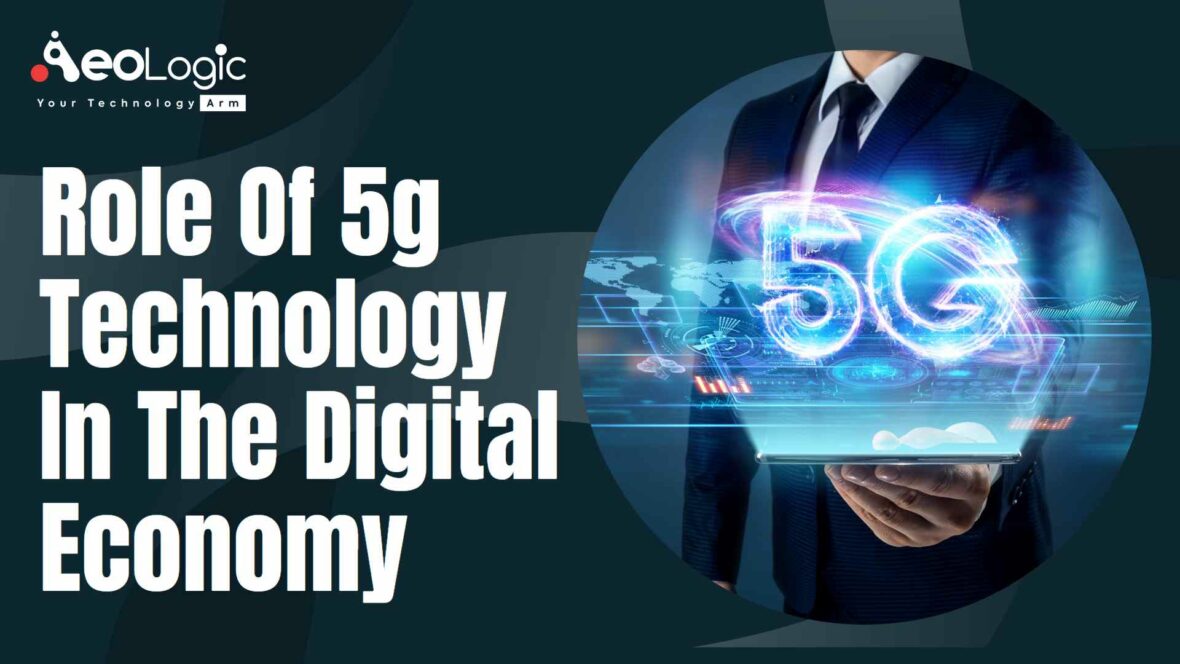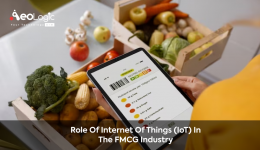Every successive generation of wireless communication technology has changed the way how we live and work. 1G allowed voice calls, while 2G supported data transmission. Whereas, 3G, launched in India in the late 2000s, presented the feature of video calling. 4G’s data speed of 1 gigabit per second (Gbps) allowed 3D virtual reality (VR), augmented reality (AR), artificial intelligence (AI), machine learning (ML), and the Internet of Things (IoT). Whereas, the role of 5G technology in the digital economy is supremely efficient. The peak data transfer speed with a negligible lag of 5G networks is ~ 20 Gbps. It is also connecting millions of devices seamlessly and amplifies network capabilities with the help of mobile edge computing.
Storage services and Compute at the edge of mobile networks, combined with ultrafast data rates, very low latency, and huge traffic capacity. It is making smart devices smarter, and connectivity solutions more effective. Higher-quality video services are redefining immersive experiences, be it gaming or education.
Also read: Why the Internet of Things Needs 5G Connectivity
Let us Discuss the Role of 5G Technology in the Digital Economy
Education
The role of 5G technology in the digital economy plays a crucial role in the education department. With the advancement of technology, the education realm is observing huge differences. The role of 5G technology in the digital economy is not just limited to autos, manufacturing, and healthcare. It will also be making a major impact on the education industry by promoting quality education and several learning opportunities. Therefore, 5G can transform the education sector profoundly by delivering improved remote-learning opportunities.
It is hard to accomplish uniform teaching quality across India, and this is particularly true for rural areas. With 5G, high-quality interactive virtual classrooms and content can be streamed all over the country remotely. Therefore. bridging the gap between rural and urban areas of India. This is implying that the physical location limitations for experimental practices and information sharing can be reduced by the use of 5G. Learning can be done easily between a larger numbers of students irrespective of their present location as the 5G network is way too faster. Whether a student is from a Tier-I city or Tier-III city, they will just require an internet connection for procuring education.
Eco-Friendly Transportation
The role of 5G technology in the digital economy is also highlighting the implementation of eco-friendly transportation. Since 5G connects vehicles to everything, hence, creating an interconnected transportation ecosystem. Such a scalable infrastructure helps in improving the reliability of autonomous vehicles, allows mobility-as-a-service, streamlines logistics, and increases urban transportation.
Since 5G is more effective as compared to 4G networks, the quality of remote services is also better. Condition monitoring of vehicular systems, navigation guidance, safety alerts, and remote assistance needs real-time access to vehicle sensor data, accurate positioning information, video feeds, and traffic condition in order to detect anomalies and decrease potential threats. Further, it is also requiring commands issued from remote locations to be provided instantaneously to vehicles. Whereas, super-fast data linking by 5G addresses the latent need for safe and autonomous mobility.
Immersive Shopping
Subsequently, the role of 5G technology in the digital economy is allowing immersive shopping for people. Multi-access edge computing is enabling retailers for creating a network at particular locations. While robust bandwidth is ensuring uninterrupted connectivity. 5G networks are allowing retail chains and shopping malls for deploying bespoke AI applications that are enhancing the shopping experience. Ranging from contactless checkout and smart digital signage to interactive digital walls.
Smarter Financial Services
The Digital India program was established for driving financial inclusion by allowing banking services on mobile devices in rural India. Increasing device density, faster speed, and enhancing the security of 5G-connected ecosystems are realizing this goal. All while empowering financial institutions for delivering customer experiences across channels.
Moreover, the responsiveness of 5G-enabled customer verification systems is enabling multidimensional biometric security procedures. Simultaneously, ultra-low latency is improving the performance of AI elements such as video analytics, natural language processing, and product recommendation engines.
Agriculture
Another role of 5G technology in the digital economy is in the agriculture industry. India’s agricultural sector is not keeping pace with the rapid technological transformations available in the global market. An assessment made by the UN indicates that 5G and IoT could help in allowing the agriculture industry to deliver a 70 percent increase in food production internationally by 2050. Thus, catering to the ever-increasing global population. On the other hand, the digitization of agriculture and the introduction of technologies such as AI and IoT, powered by 5G can help in improving overall productivity. Placing 5G powered smart sensors in a farm can help in gathering and delivering real-time soil status, temperature, and humidity.
For measuring and informing farmers about what needs to be done for keeping their crops healthy. Subsequently, 5G can further help in enhancing, monitoring, automating, and improving agricultural operations and processes. Such kind of real-time data will facilitate farmers to take immediate action in case of an infection in one part of the farm. And this will be enabling them to manage their resources like fertilizers and water efficiently. The end result for the agriculture industry would be higher-quality produce and improved crop yields.
Also read: Benefits of 5g in Industrial Environments
Conclusion
The role of 5G technology in the digital economy will be considerable, and it will deliver an extra boost to the fourth industrial revolution with the augmentation of the Internet of Things. Its reliable and fast real-time data transfer will enormously benefit the sensors and control units installed in machines, facilities, and logistics chains across industries.
Get in touch with us at support@aeologic.com to know more about the uses of 5G for your business!
FAQs
What is the impact of 5G technology?
5G wireless technology is meant to provide higher multi-Gbps peak data speeds, ultra-low latency, massive network capacity, more reliability, increased availability, and a more uniform user experience to a higher number of users. Improved efficiency and higher performance will be empowering new user experiences and connects new industries.
How 5G could facilitate powering digital India?
Meanwhile, 5G-enabled facilities will be benefitting from sensors placed throughout, collecting data to feed back to machines and production managers, and monitoring production processes. This will highly improve the speed of operations, enhance maintenance capabilities and escalate safety.







